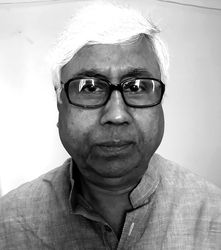Lagging behind in many areas of endeavour, the post-Independence Bengali attempted to make up for it in the field of cinema. A succession of outstanding filmmakers such as Satyajit Ray, Ritwik Ghatak, Mrinal Sen and Tapan Sinha injected a fresh creative dimension to Bengali daily life.
Even when the early masters were still active, Bengali cinema saw the emergence of a new crop of promising directors like Buddhadeb Dasgupta, Goutam Ghose, Utpalendu Chakrabarty, Biplab Roychowdhury and Aparna Sen, coinciding with the arrival and brutal suppression of the Naxal movement. Well-made and better-argued social statements like Dooratwa and 36 Chowringhee Lane marked the birth of an angry, interrogative spirit; reflecting popular resentment against urban decay and feudal oppression.
Such films lent primacy to the Bengal chapter of what is known as the new wave of Indian cinema, which is commonly accepted to have begun with Mrinal Sen’s Bhuvan Shome (1969). However, in hindsight, it looks like a mystery that while the veterans continued with their good work for at least a decade and a half since Bhuvan Shome, the more recent arrivals began to show signs of premature disintegration under the pressure of self-aggrandisement.
Dasgupta—who made a vivid impression with his Calcutta trilogy (Dooratwa, Neem Annapurna, Grihajuddha), dealing with the erosion of values of the middle and lower classes—began to look pretentious and hollow, when he made forays into magic realism. Similarly, Ghose, too, frittered away his initial gains while searching for easy success.
With the onset of liberalisation in the early 1990s and the swift ascendancy of the acquisitive instinct in artistic circles, Bengali cinema went into such a slump as to demoralise its best viewers. What to speak of vision or innovativeness, when directors and producers of doubtful value began to churn out potboilers made in equal parts of sex, violence and tear-jerking.
Also read
- 7 decades after Satyajit Ray made 'Pather Panchali', Bengali cinema seems lost
- ‘Pather Panchali’ was 1st genuine cinema to come out of India: Adoor Gopalakrishnan
- The Bengali film industry has become bankrupt, says Goutam Ghose
- Not all of Satyajit Ray's films are equally great, says Girish Kasaravalli
- My father kept politics in the background in his movies, says Sandip Ray
- Losing the plot
Sadly, things have come to such a pass that one can count on one’s fingers the number of worthwhile films made in Bengali in the past two decades or so. A film of truth and beauty happens once in a long while, but such rarities are, well, rarities. The feeling that everything is not yet lost is proven by, say, a tragic, idiosyncratic offering like Suman Mukhopadhyay’s Herbert, adapted from Nabarun Bhattacharya’s award-winning novel of the same name.
In this connection, a few other films, too, come to mind. Sthaniyo Sangbad by Arjun Gourisaria and Moinak Biswas is, in a sense, a blistering indictment of the long and unchallenged left rule in Bengal. Another notable film combining style with substance was Pradipta Bhattacharya’s Bakita Byaktigato. But the Bengali filmmaker of the moment is, arguably, Atanu Ghosh, who has directed movies like Mayurakshi and Robibar. Not exactly a favourite of the media, Ghosh has, however, gained for himself a growing, steadfast audience who appreciates his storytelling skills and his experimentation with the formal aspects of cinema.
If the Bengali film-going middle classes return to theatres, it may partly be because of the mode of introspection they are compelled to enter as they watch Ghosh’s quiet, deep incursions into the soul of a people scarred by a sense of despair.
The writer is an award-winning film critic and writer based in Kolkata.



